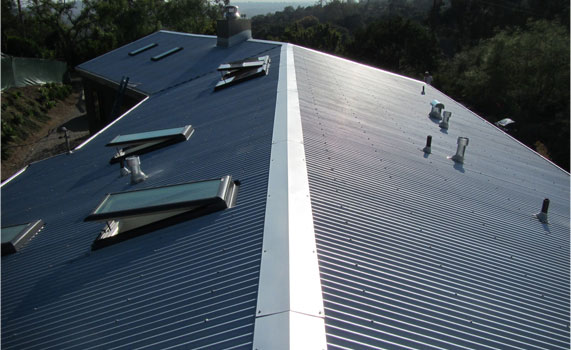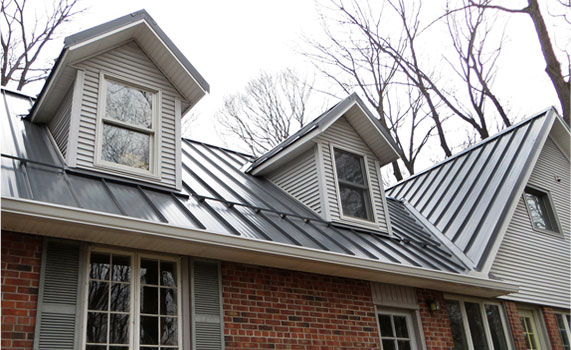Metal Roofing
Metal Roofing Benefits
Metal surpasses conventional roofing materials in several ways:
Expected Life:
Speed & ease of roofing installation:
Heat conduction:
Maximum shedding of rain and snow:
Weight:
Because of the material’s light weight, you can save on engineering and building the supporting structure.
In fact, if you’re building a house or an addition, you can often downsize or reduce the number of roof support members.
Some types of metal roofing materials may be applied over an existing roof without the need for tear-off or additional structural support.
Fire resistance:
Minimal roof pitch:

Corrugated Roofing Panels
Exposed Fastener:
Corrugated roofing has been around for over 100 years, but the old style of short panel lengths and rusted edges are a thing of the past. Corrugated metal panels offer great protection, and are an upward trend in designs using metal roofing.

Standing Seam Metal Panels
Hidden Fasteners:
A very popular panel for roofing, the standing seam panels offer long sleek lines and are usually installed with hidden fasteners helping to add to their clean appearance. Standing seams can be run over open purlin systems and in long single runs making them very appealing in modern metal designs and residential or commercial applications.
